Microcement stairs: how to coat them correctly
Microcement is the decorative coating par excellence for floors and walls. In fact, it is very common to see continuous flooring and walls coated with microcement in all types of commercial premises and businesses. But also in the domestic sphere, where this coating has gained stellar popularity in the renovation of bathrooms and kitchens thanks to the waterproof and non-slip finishes offered by microcement.
A versatility to which we must add microcement stairs, a differentiating decorative element that more and more professionals and individuals are taking into account due to its modern aesthetics, the continuity it provides as it does not need expansion joints and, above all, its extraordinary functionality compared to other materials.
It should not be forgotten that although microcement stairs are designed to facilitate and speed up access to the different floors of the building in question, they are also a powerful design element on a visual level due to their breaking character.
In this article we will cover everything you need to know about microcement stairs: advantages, types, the most suitable colours, how to make a microcement staircase correctly and a series of tips to help you become a real expert on the subject.
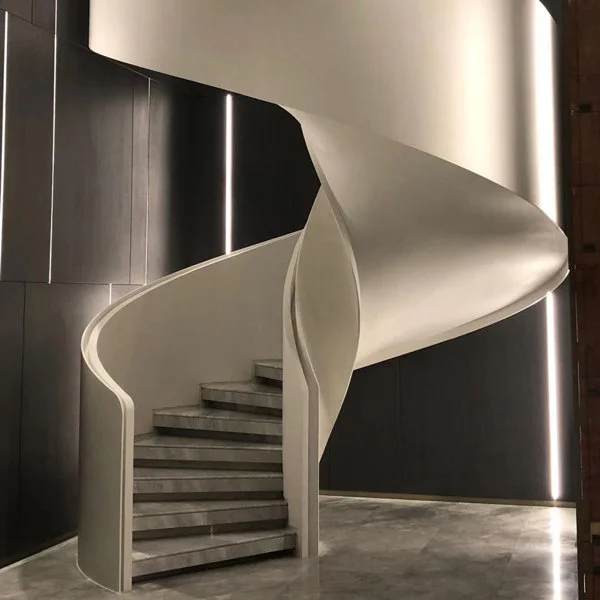
Advantages of microcement stairs
Why have microcement staircases become a decorative trend? Below we explain the main benefits that have propelled microcement stairs to the top.
1. Microcement stairs encourage continuity
Stairs coated with microcement are becoming more and more popular for many reasons, especially because they do not need expansion joints, unlike wooden or parquet stairs, for example. An added value as microcement stairs promote the continuity of the staircase itself and, above all, of the room in which they are located.
All the elements (staircase, floor, walls, ceiling) form part of a whole as they are perfectly integrated. An appearance of absolute continuity that can go one step further if the colour of the microcement staircase matches that of the flooring.
2.Forget about building work with microcement stairs
Microcement is a highly adherent decorative coating that is applied directly onto existing material such as marble or concrete. A competitive advantage that allows you to renovate stairs with microcement without the need for building work and rubble in just a few hours, with the time and cost savings that this entails.
3. Easy cleaning of microcement stairs
Small staircases do not usually cause many problems when it comes to cleaning. But what about those endless stairs connecting floors and floors that make you dizzy just looking at them?
Microcement stairs are very practical, as they are very easy to clean as they are a continuous surface without joints, which makes the cleaning process of each step quick and easy. With water and neutral soap, it is more than enough.
4. Microcement stairs are very resistant
If there is a differentiating element of microcement stairs, it is their durability. They will remain in perfect condition over the years thanks to their excellent resistance, especially to traffic, impact and abrasion. Topciment microcement for stairs is a material that withstands all kinds of blows.
5. Microcement on stairs does not affect structural load
It should be noted that microcement is very thin (between 2 and 3 millimetres). This means that coating stairs with microcement does not affect the structural load in any way.
6. Microcement stairs for interiors and exteriors
Microcement stairs are a very versatile architectural element that is mainly used in interior design because of the feeling of stability, spaciousness and cleanliness it offers. However, it has become increasingly fashionable to coat stairs with microcement also in exteriors, due to the elegance, majesty and presence they exude.
7. Microcement stairs with anti-slip finish
Thanks to our Microdeck microcements, the microcement staircase will be a safe space free from slips and falls, as they are types of smoothed microcement that guarantee this non-slip finish. Also, if the applicator chooses another type of microcement, in Topciment we have several varnishes within the Topsealer range that give the microcement staircase that non-slip character.
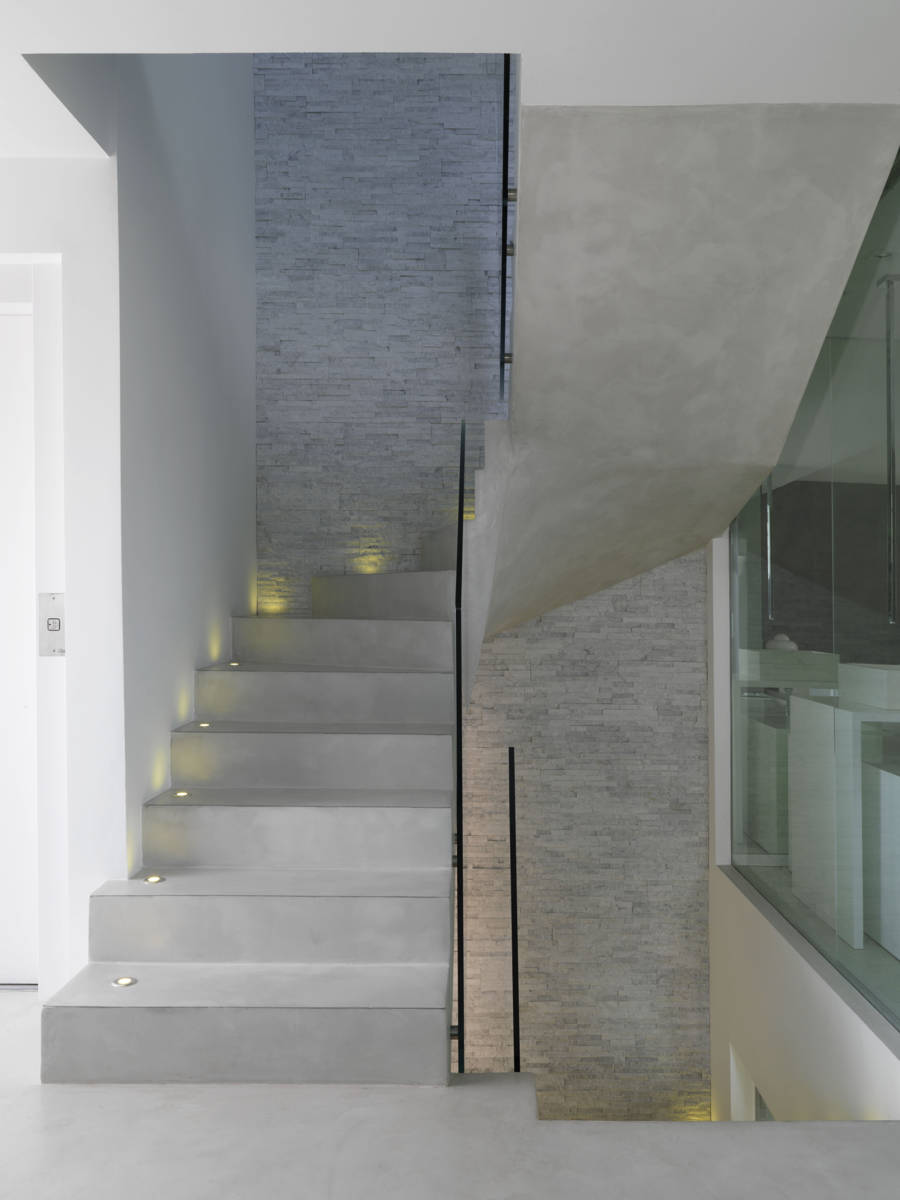
Types of microcement stairs
The design possibilities that microcement allows for the coating of stairs are unlimited. In our categorisation, we have taken two factors into account. Firstly, whether the steps of the microcement stairs are between the walls or not and the type of risers.
With this differentiation, we find the following microcement stairs: closed microcement stairs with two walls, closed microcement stairs with one wall, closed microcement stairs without walls, open microcement stairs with two walls, open microcement stairs with one wall, open microcement stairs without walls, recessed microcement stairs in one wall, recessed microcement stairs without walls and microcement stairs with central substrate.
Which microcement and colour to use for stairs
Although grey is the most popular colour for coating stairs with microcement, all kinds of colours can be applied to give a differentiating element to the decoration of your home or business. In Topciment, we have a wide range of microcement colours for stairs. From neutral colours for a more minimalist and industrial design to brighter colours if you are looking for a more daring decoration.
As for the type of microcement, our experts recommend Microdeck finishing microcement for coating stairs. At Topciment we have developed three types of Microdeck: Sttandard Microdeck (traditional two-component microcement)
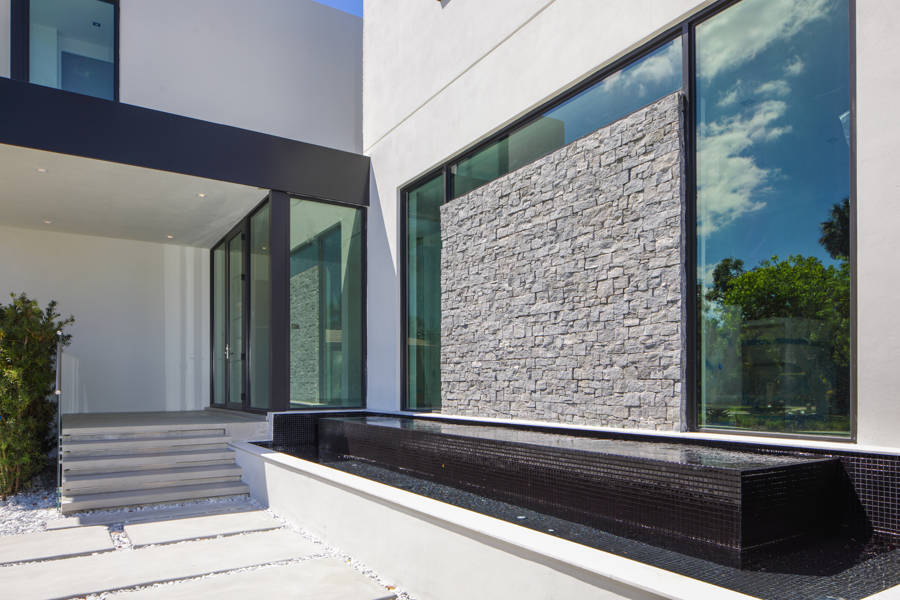
How to make microcement stairs:
The first thing to bear in mind when applying microcement on a staircase is that this process can only be carried out by an experienced professional. Coating a staircase with microcement requires an advanced application technique to obtain the desired result. A series of particularities that must be taken into account and that only a trained applicator will be able to guarantee.
Applying microcement on stairs in 8 steps
Take note of the 8 steps to follow for stairs coated with microcement.
1. Assess the state of the substrate
The state of the existing substrate on the stairs must be analysed before applying microcement. If the substrate that will form the base of the microcement staircase is not in optimum condition, all kinds of cracks or defects could appear. That is why it is so important to have a good professional who will know how to correctly assess the quality of the substrate.
2. Priming the microcement staircase
Once we are sure that the substrate is in good condition, the second step to make a microcement staircase is to apply the primer or adhesion promoter.
3. Levelling the steps of the microcement staircase
The third step in making a microcement staircase consists of levelling and protecting the steps. This prevents future breakage and wear by eliminating any irregularities that may be present.
4. Apply the first layer of microcement Microbase on the staircase
The fourth step in the application of microcement on stairs consists of applying a first coat of Microbase without pigment. Once this is done, it is sanded.
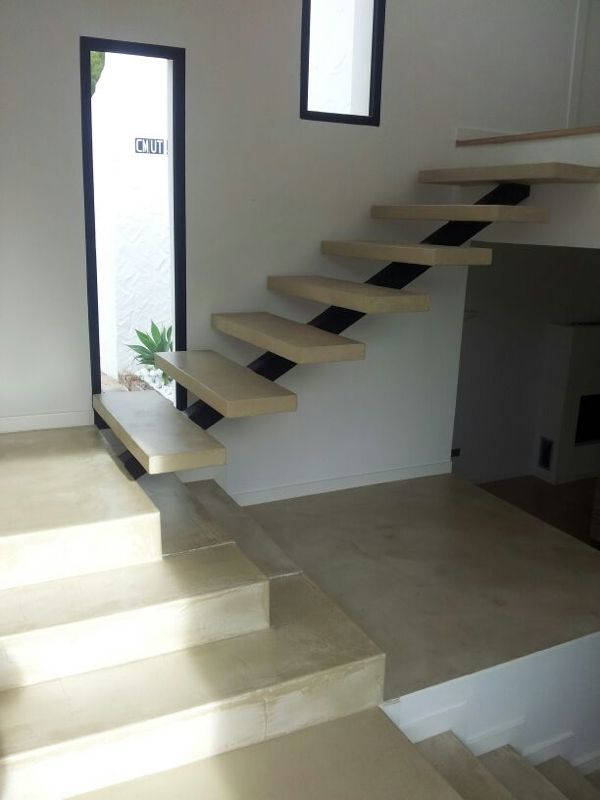
5. Apply a second coat of Microcement Microbase on the staircase
The fifth step of application on microcement stairs is to apply a second layer of Microbase, in this case with pigment. The procedure and sanding of the previous step must be repeated.
6. Applying the first layer of Microdeck microcement on the staircase
The sixth step in applying microcement on stairs is a first thin layer of Microdeck with colour. Once the layer is dry, the surface should be sanded.
7. Apply a second layer of Microdeck microcement on the staircase
The sixth step in making microcement stairs is to apply the second layer of Microdeck. As soon as it dries it will be necessary to sand the surface.
8. Sealing and protecting the microcement staircase
The last step in the application of microcement on stairs is one of the most important, as it is a question of protecting the coating and ensuring that it remains in optimum condition for a long time.
To do this, at Topciment we recommend applying two coats of Presealer acrylic varnish and another two coats of one of our polyurethane varnishes, especially Topsealer WT One Coat .
3 tips for applying microcement on staircases
As mentioned above, not everyone is qualified to make microcement stairs, only professional applicators with years of experience due to the complexity involved.
These are the three main tips to keep in mind when making microcement stairs:
1. Protect the edges of the microcement stairs with aluminium profile .
The corners or edges of the steps of microcement stairs are, without a doubt, the area most exposed to all kinds of scratches and knocks. For this reason, as manufacturers, we recommend the use of corner pieces or aluminium profiles. These complements can be hidden from view (although we recommend leaving them visible because they add a touch of elegance) and will protect the microcement stairs better and for longer, thus preventing breakage or wear and tear.
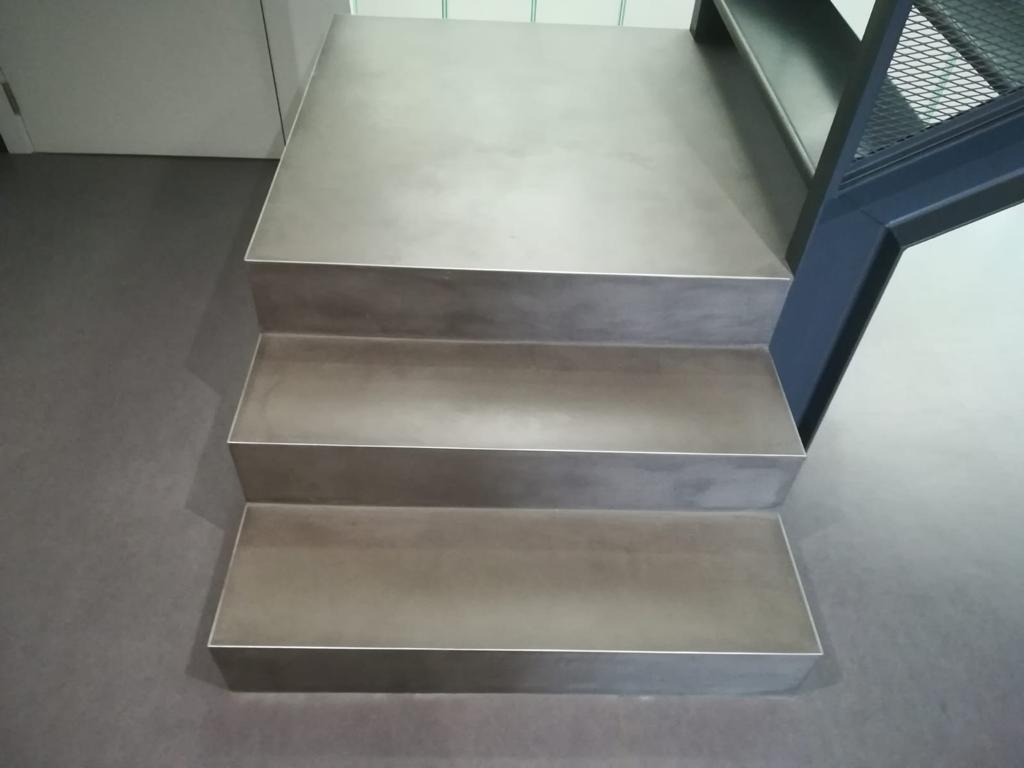
2. Minimally rounded edges of the microcement staircase
Although it is possible to leave the step of the microcement staircase at 90 degrees, it is advisable that the edges are rounded, even if only minimally. By following this advice and "cutting" the edges of the future microcement staircase, chipping or knocks are avoided as the impact on the microcement staircase is less.
3. Fibreglass mesh for microcement stairs
Although some applicators do not always place a fibre mesh on the microcement base layer, at Topciment we are in favour of always doing so. Thanks to the mesh, we can reinforce the microcement staircase.
Subscribe to our newsletter
Receive in your email tips for the application and care of microcement, the latest trends and news about Topciment products.




